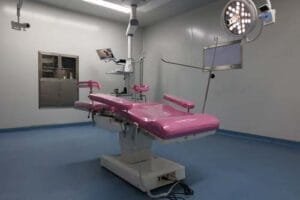Endereço
304 North Cardinal St.
Dorchester Center, MA 02124
Horas de trabalho
Segunda a sexta: 7h00 - 19h00
Fim de semana: 10h - 17h
In the realm of modern healthcare, the integration of advanced medical equipment is essential to providing safe and efficient patient care. Among these innovations is the electric delivery table, a crucial tool in maternity care units. However, the acquisition and installation of such equipment come with associated costs that healthcare facilities must carefully consider. In this comprehensive guide, we will delve into the intricacies of the costs involved in installing an electric delivery table.
In the ever-evolving landscape of healthcare, the importance of advanced medical equipment cannot be overstated. Electric delivery tables, designed to enhance patient care and safety during childbirth, are a prime example of such equipment. However, healthcare facilities must weigh the costs associated with acquiring and installing these tables against the benefits they provide.

An electric delivery table is a specialized medical device designed to support expectant mothers during labor and childbirth. It offers motorized adjustments for precise positioning and enhanced patient comfort. These tables have revolutionized maternity care by improving safety and efficiency.
Electric delivery tables offer a plethora of advantages, including precise positioning for medical procedures, enhanced patient comfort, and versatility in maternity care. Their incorporation into healthcare facilities has led to improved outcomes for both expectant mothers and healthcare providers.
The cost of installing an electric delivery table comprises several components that healthcare facilities must consider.
The initial purchase price of an electric delivery table is a significant cost component. It includes the base cost of the table itself, any additional features or accessories, and potential shipping fees. Prices can vary depending on the brand, model, and features chosen.
The installation and setup costs cover the expenses associated with assembling and positioning the electric delivery table within the healthcare facility. This may include professional installation services and any required modifications to the facility’s infrastructure.
Ongoing maintenance and potential repair costs are essential considerations. Electric delivery tables require regular servicing to ensure their safety and functionality. Maintenance may involve inspections, cleaning, and replacement of components as needed.
Healthcare facilities must assess the financial impact of installing an electric delivery table. This involves evaluating the total cost of ownership, including purchase, installation, and maintenance expenses, over the expected lifespan of the equipment.
Proper budget allocation and planning are crucial. Healthcare facilities should allocate funds for the acquisition and installation of electric delivery tables as part of their capital budget. Additionally, they must plan for ongoing maintenance and repairs within their operational budget.

Healthcare facilities have various funding options to consider when acquiring electric delivery tables:
While the costs of installing electric delivery tables are significant, it’s essential to evaluate the long-term benefits. These tables contribute to improved maternity care outcomes, enhanced patient satisfaction, and increased efficiency for healthcare providers. These benefits can result in cost savings over time and improved quality of care.
O preço de uma mesa de entrega elétrica pode variar muito dependendo de fatores como marca, modelo, características e acessórios. Geralmente, os preços podem variar de vários milhares a dezenas de milhares de dólares.
Yes, healthcare facilities can explore leasing or financing options to spread the cost of acquiring electric delivery tables over time. This can help manage the initial financial impact.
A frequência de manutenção de uma mesa de distribuição elétrica pode variar dependendo do uso e das recomendações do fabricante. Normalmente, inspeções e manutenções regulares devem ser realizadas para garantir segurança e funcionalidade.
Many electric delivery tables come with warranties that cover specific components and services. Healthcare facilities should inquire about warranties and their terms when purchasing these tables.
In conclusion, the installation of electric delivery tables in healthcare facilities is a significant investment, encompassing purchase, installation, and maintenance costs. However, the benefits they provide, including improved patient care and safety, make them valuable assets in maternity care units. Careful budget allocation, planning, and exploring funding options are essential for healthcare facilities to acquire and maintain electric delivery tables while ensuring financial sustainability.
